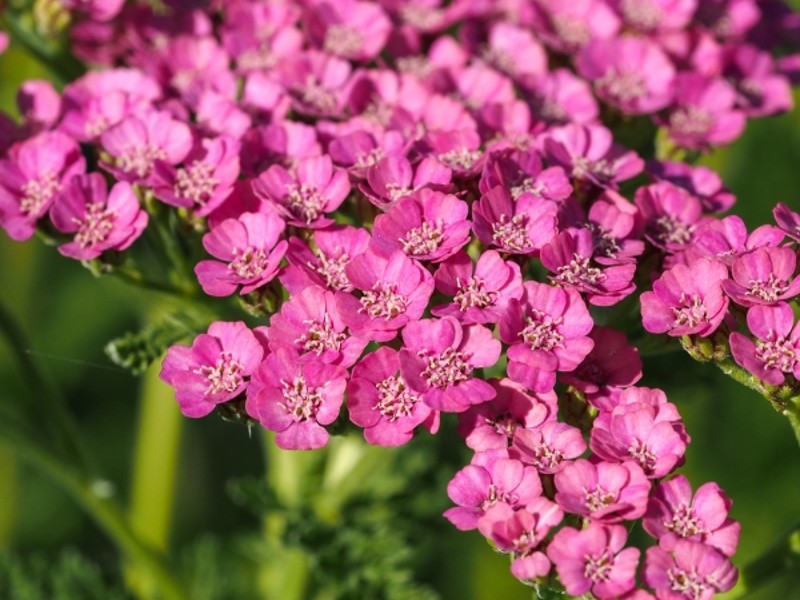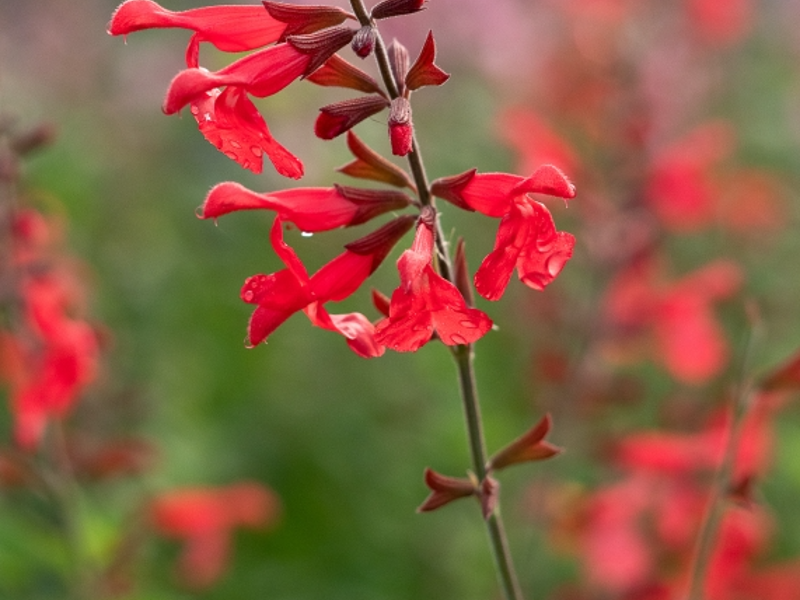Planting for pollinators for insect week 2024
Insects are critical for pollinating our food and flowers. As the last week of June is Insect Week, which aims to raise awareness of and love for our insect friends. We're highlighting some of our favourite plants which are friendly for pollinators. This includes plants which attract bees, moths, butterflies and beetles.
![]()
To help you find plants which are pollinator friendly we include a bee symbol on our plant labels and website listings. If you see this sign, you'll know that this plant is really a pollinators favourite. Pollinator friendly plants which are perfect for planting now include:
This is a beautiful mid pink variety with individual florets that are a bit larger than the average Achillea. This hard to find Yarrow is much sought after by designers, as its clear flower colour persists even when the plant is starting to go over and is neatly complimented by its grey-green foliage. Great for attracting pollinators, a second flush of flowers can be encouraged by cutting the plant back to ground level after the first flush has finished. Poorer soils and a sunny position are always good for these plants.

Spherical pinky-purple flower heads in mid to late summer on a compact plant, with almost fully evergreen dark green strap-like foliage. This is a perennial form of Allium and produces new bulbils at the sides of the main plant, making it easy to split for propagation purposes. They are happier in mixed planting in a sunny border with free draining soil, but are also ideal for gravel gardens, raised beds or containers where their distinctive silhouette can be showcased. A veritable bee magnet and excellent cut flower.
Bistorta amplexicaulis Orange Field ('Orangofield'PBR)

'Orange Field' is well named for its unusual flower hue. From late summer deep into autumn it hosts a long lasting and free flowering display of tall spikes smothered with deep brick-red buds that gently open to form tiny coral-orange flowers blushed with white, all over a spreading carpet of slender, mid-green foliage. Unashamedly informal and naturalistic in habit, it is a stunning choice for a wildlife garden, where it will attract bees, butterflies and other pollinators in their droves. Its preference for a moisture retentive soil and ability to thrive in either full sun or part shade, make it perfect for a bog garden, water meadow or the edge of a river where its lovely silhouette will be reflected. A 'go-to' plant for heavy clay, it can even cope with the clay partially drying out in the summer. For a 'cool' theme combine it with whites and pale pinks, or vamp it up a bit with purples and reds. Synonym Persicaria amplexicaulis Orange Field
This plant really lives up to its name, 'Big Blue', the intensity of blue on the large flower heads is stunning. It forms good sized clumps in a reasonably fertile soil in full sun, and is great for the middle of a herbaceous or mixed border - it is also a fantastic cut flower. Once the flowers have finished it continues to provide a structural focal point.

This low-growing cultivar perfectly sets off small pale pink flowers with purplish veins against neat, dusky chocolate divided leaves. An unusual but delicious colour combination; this plant is great for adding contrast to container planting, a gravel garden or edging an informal path. Much beloved by bees, it delicacy belies its toughness and ability to tolerate different conditions. It prefers to grow in a free-draining soil in full sun to part shade.
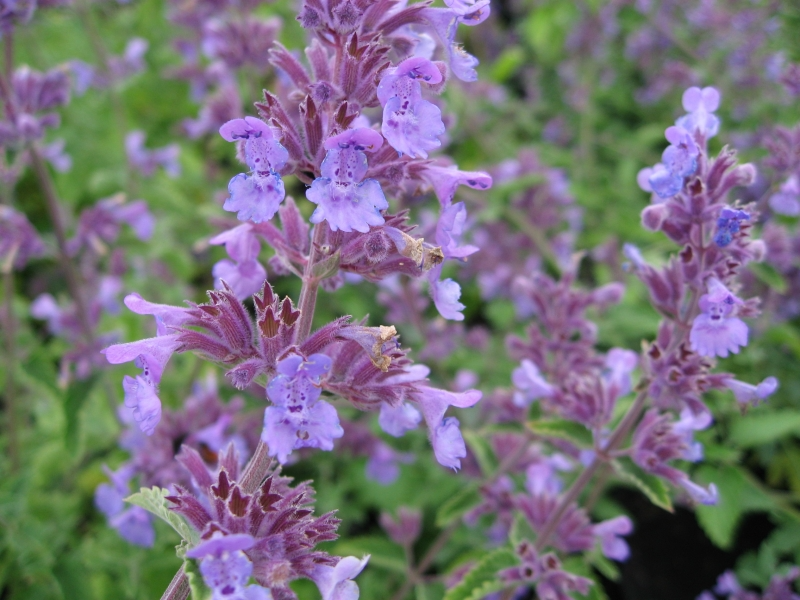
This perennial has beautiful large, lilac blue flowers that appear above grey foliage. Do not be fooled by the name! This is named after a place in Yorkshire where 'Low' means a 'hill'. So not a low growing plant, which would mean it is really best positioned in the middle of the border where it will flower for a long period throughout the summer. Full sun is by far the best position for this Catmint, in any soil.
Oenothera lindheimeri Rosyjane ('Harrosy) PBR.

This is the star of our breeding programme with large flowers of white with pink picotee edge, the first true colour break in this plant family. It flowers all summer liking a sunny site in well drained soil. In the late autumn cut the growth to half height to keep it tidy and stop root rock. Then in early spring cut it back down to about 5cm from ground level this will promote regrowth from the base in early summer.
Rudbeckia fulgida var. sullivantii 'Goldsturm'.
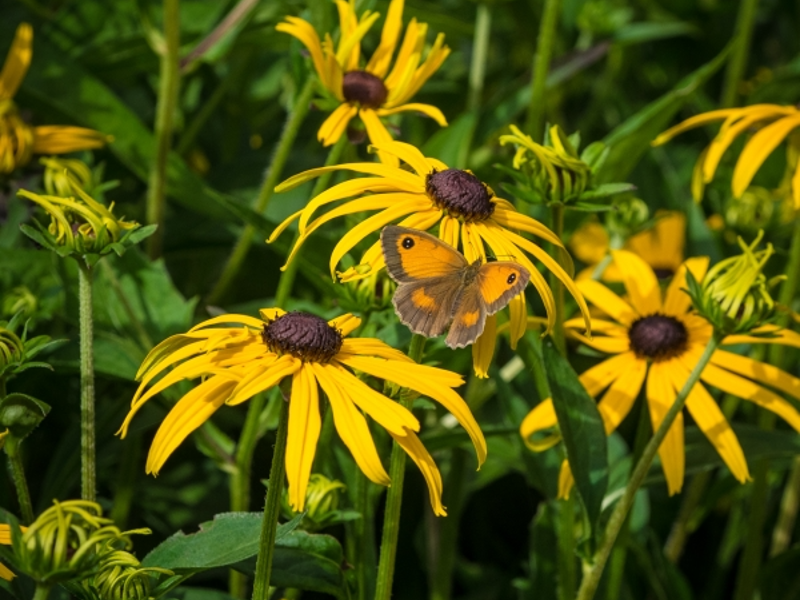
'Goldsturm' is a cultivar of Rudbeckia, commonly known as Coneflower, stunning, vibrant, yellow daisies with their dark brown centres appear during late summer to autumn. It is an upright perennial with a clump-forming habit. Erect stems bear green, narrow lance-shaped foliage. Divide large clumps during the autumn after flowering, to help maintain vigour. Ideal for prairie style planting, cottage gardens and perfect for pollinators this is a hard working, all rounder. Plant in any reasonable soil towards the back of your flower borders, in sun or dappled shade.
Large, airy spikes of coral red tubular flowers are carried on reddish green stems above tidy, triangular green leaves that smell sweetly of sage. A recent introduction from America after a cross between Salvia darcyi and Salvia macrophylla. Low maintenance, it can tolerate coastal conditions away from the wind, as well as more sheltered, free draining, inland gardens. In exposed and colder areas, grow it in a container and bring it under cover, frost-free, for the winter. Bees, butterflies and moths love it. To get the best from this plant, grow it in a thin, light, fairly fertile, free draining soil in full sun.
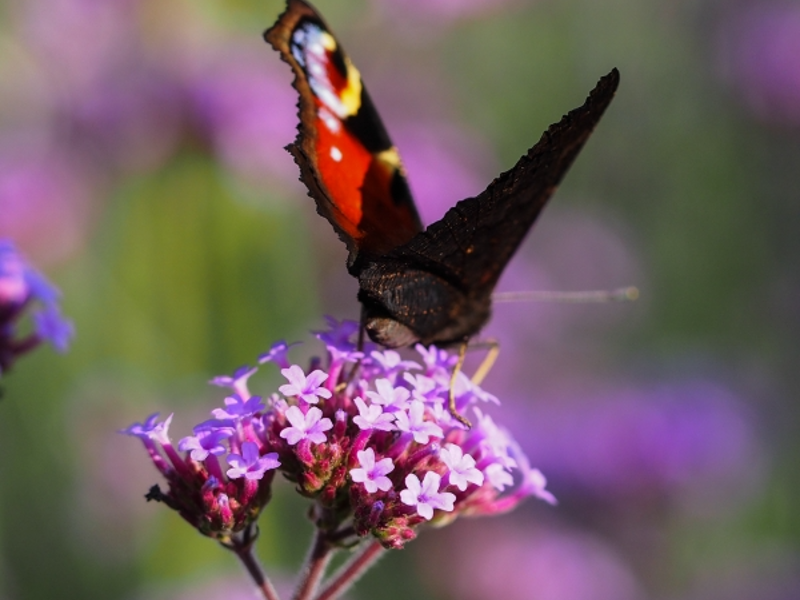
Commonly known as Argentinian Vervain, Verbena bonariensis has a columnar habit. This native to South America is a tall perennial with branching stems that bear clusters of tiny violet flowers during summer. This is a plant which likes to self seed freely, butterflies and bees go mad for this tender perennial, making it a fantastic choice for wildlife gardens. Verbena loves a position in full sun and a well-drained soil; gravel gardens, sunny wall-side flower beds and borders are all ideal.

Commonly known as the Hardy Garden Verbena, Verbena rigida is a perennial, however, it is often grown as an annual. On branched stems with green oblong leaves, clusters of purple, fragrant flowers appear throughout the summer months. This Verbena will be extremely happy in any soil, providing the it's not waterlogged; it does require a sunny spot though, making it perfect for south facing borders. Great for edging pathways, Verbena rigida will self-seed freely so if you wish to avoid this, ensure you remove the spent flowerheads.
Insect Week is organised by the Royal Entomological Society and supported by numerous partner organisations in the UK and Europe, Its purpose is to engage and educate the general public about the importance of insects and entomology through hundreds of events across the UK. it runs in the last week of June each year. In 2024 it is running from 24 - 30 June. See: Insect Week 2024

